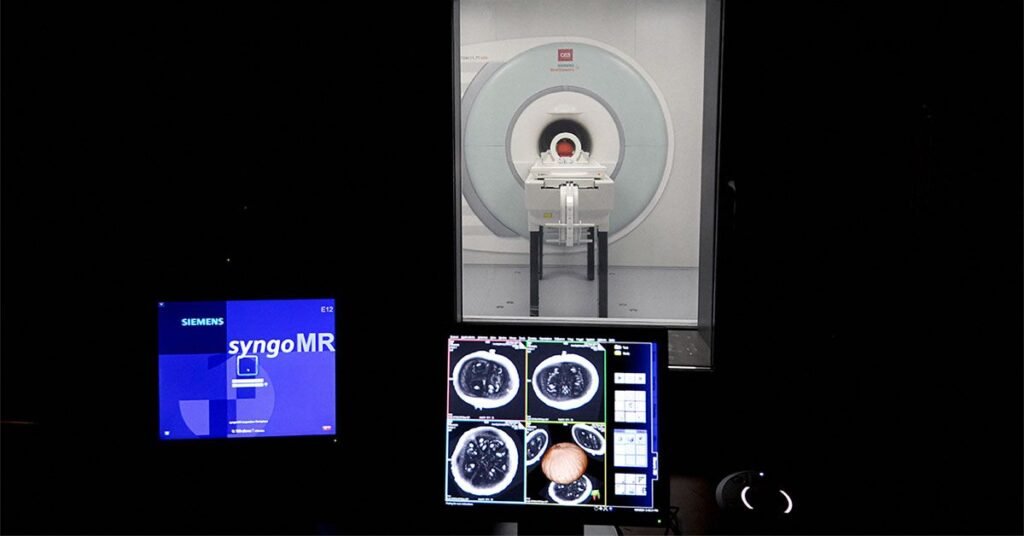A study utilizing the latest scanning technology explores the impact of COVID-19 on brain health, particularly focusing on the brainstem, which controls breathing and other essential functions. The researchers found distinct changes in the brainstem in individuals who had been hospitalized with severe COVID-19, with more pronounced damage in those with more severe disease. These changes were consistent with brain inflammation, suggesting that the long-term symptoms of COVID-19, such as fatigue, brain fog, and breathlessness, may be a result of inflammation in the brainstem following infection. The study highlights the potential link between brainstem abnormalities and persistent COVID-19 symptoms.
The researchers recruited 30 participants who had been hospitalized with severe COVID-19 and compared their brain scans with age-matched individuals who had not been infected with SARS-CoV-2. Using a powerful scanning technology known as ultra-high field quantitative susceptibility mapping, the researchers were able to detect microscopic changes in the brainstem that were not visible with other methods. The study identified abnormalities in the major regions of the brainstem, suggesting a neuroinflammatory response following COVID-19 infection. These abnormalities were more pronounced in individuals with high levels of inflammation during the infection, offering insight into the potential mechanisms underlying long-term symptoms.
The study also sheds light on how the SARS-CoV-2 virus may impact the brain, with evidence suggesting that the virus can infect olfactory neurons and travel to the central nervous system. While direct viral infection in the brainstem is rare, inflammation in the brainstem in response to the infection in the body may contribute to persistent symptoms. The researchers emphasize that further research is needed to fully understand how the virus causes damage and whether interventions can prevent or repair this damage. The study’s limitations, including its small sample size and lack of follow-up scans, highlight the need for continued research in this area.
Despite its limitations, the study contributes to our understanding of how COVID-19 affects the brain and offers valuable insights into potential mechanisms underlying long COVID symptoms. By utilizing advanced scanning technology, the researchers were able to detect subtle brainstem abnormalities that may explain the presence of persistent symptoms in some individuals. Ongoing research and analysis of additional MRI data from participants in the study may provide further insights into the impact of COVID-19 on brain health and potential avenues for future research into other neurological conditions involving brainstem inflammation.
Overall, the study underscores the importance of investigating the neurological effects of COVID-19 and the potential long-term consequences on brain health. By studying the brainstem and its role in regulating vital functions, researchers can gain a deeper understanding of how the virus impacts the central nervous system and contributes to persistent symptoms. The findings may also have implications for other neurological conditions characterized by inflammation in the brainstem, opening up new avenues for research and potential interventions.










